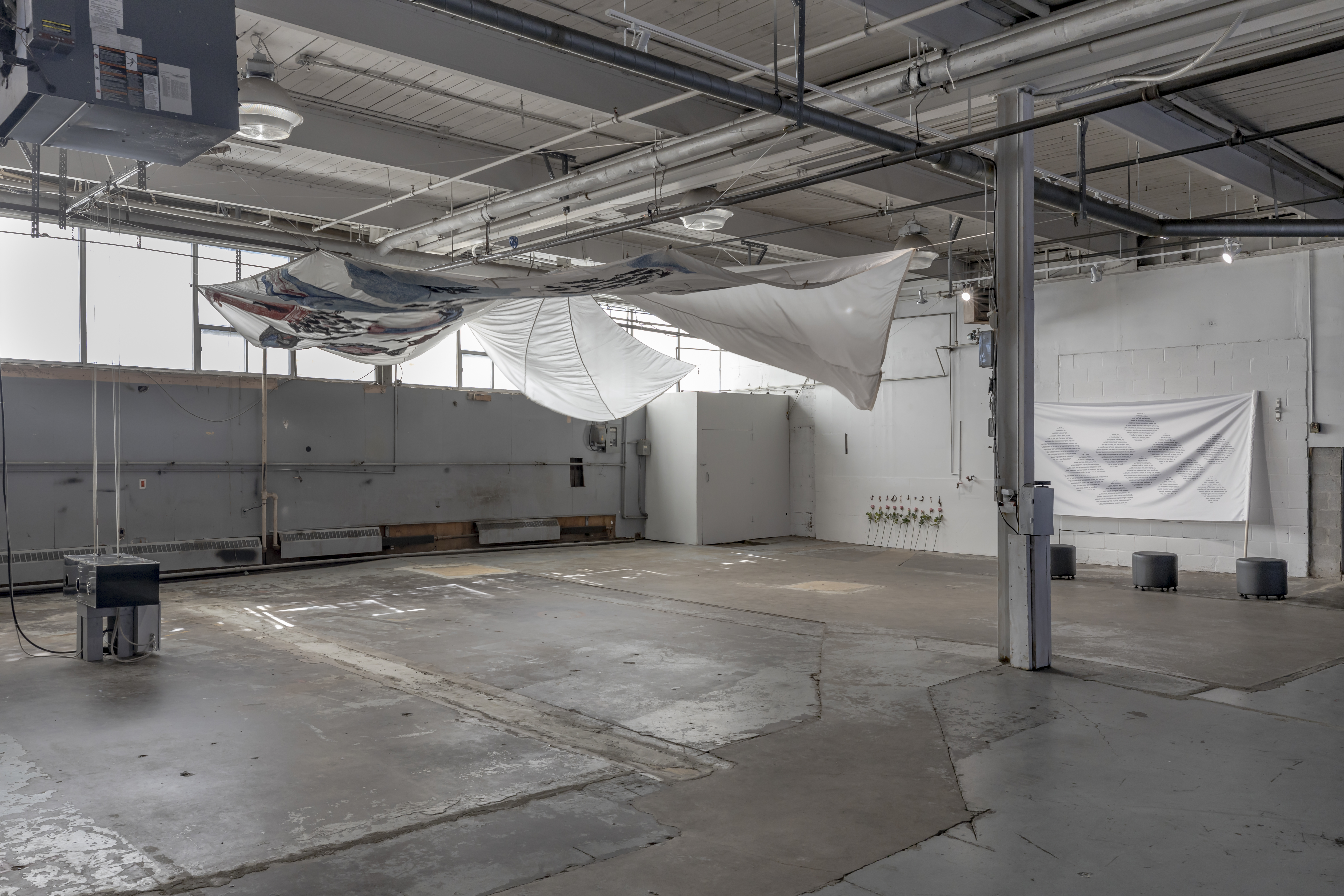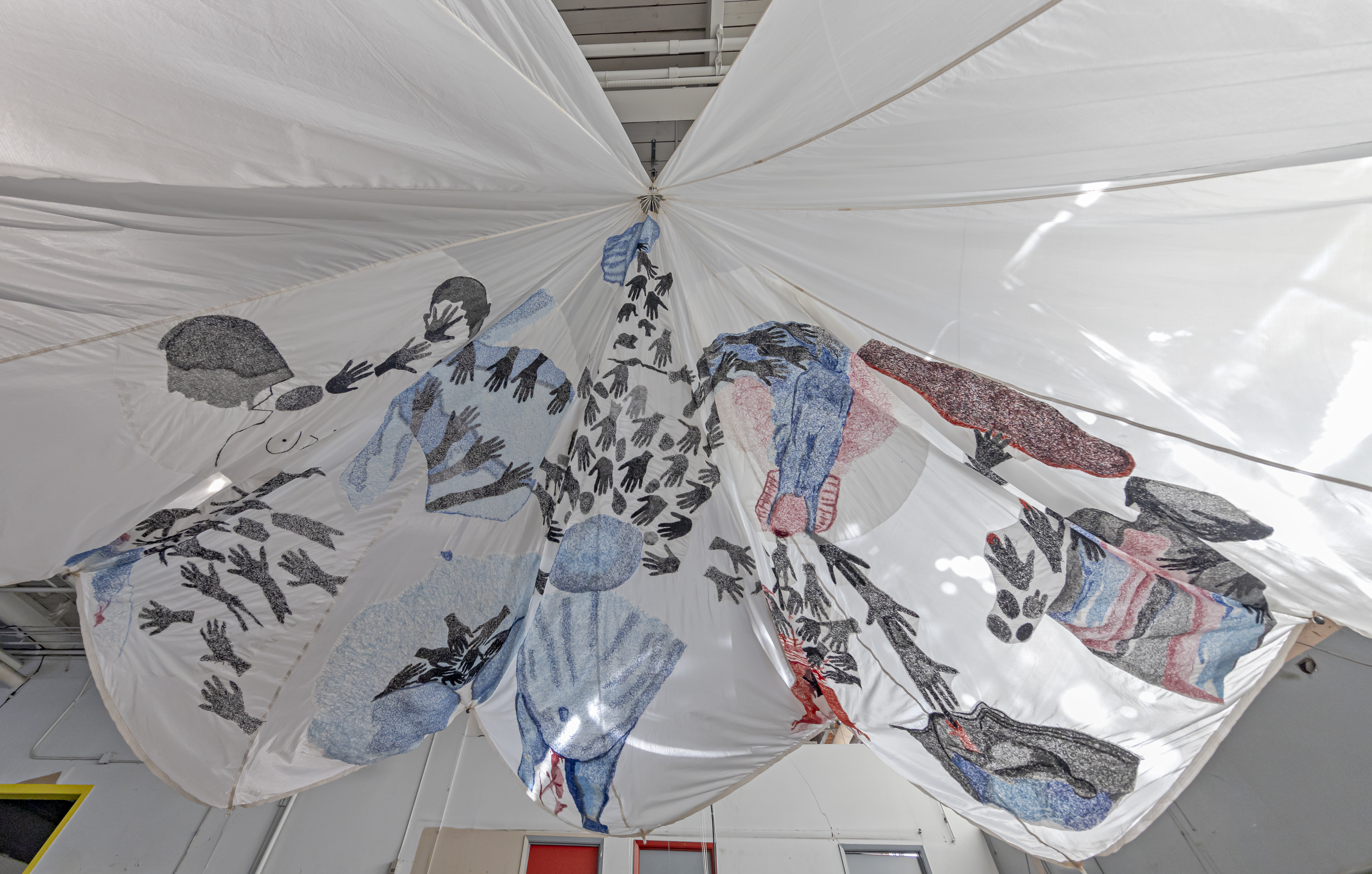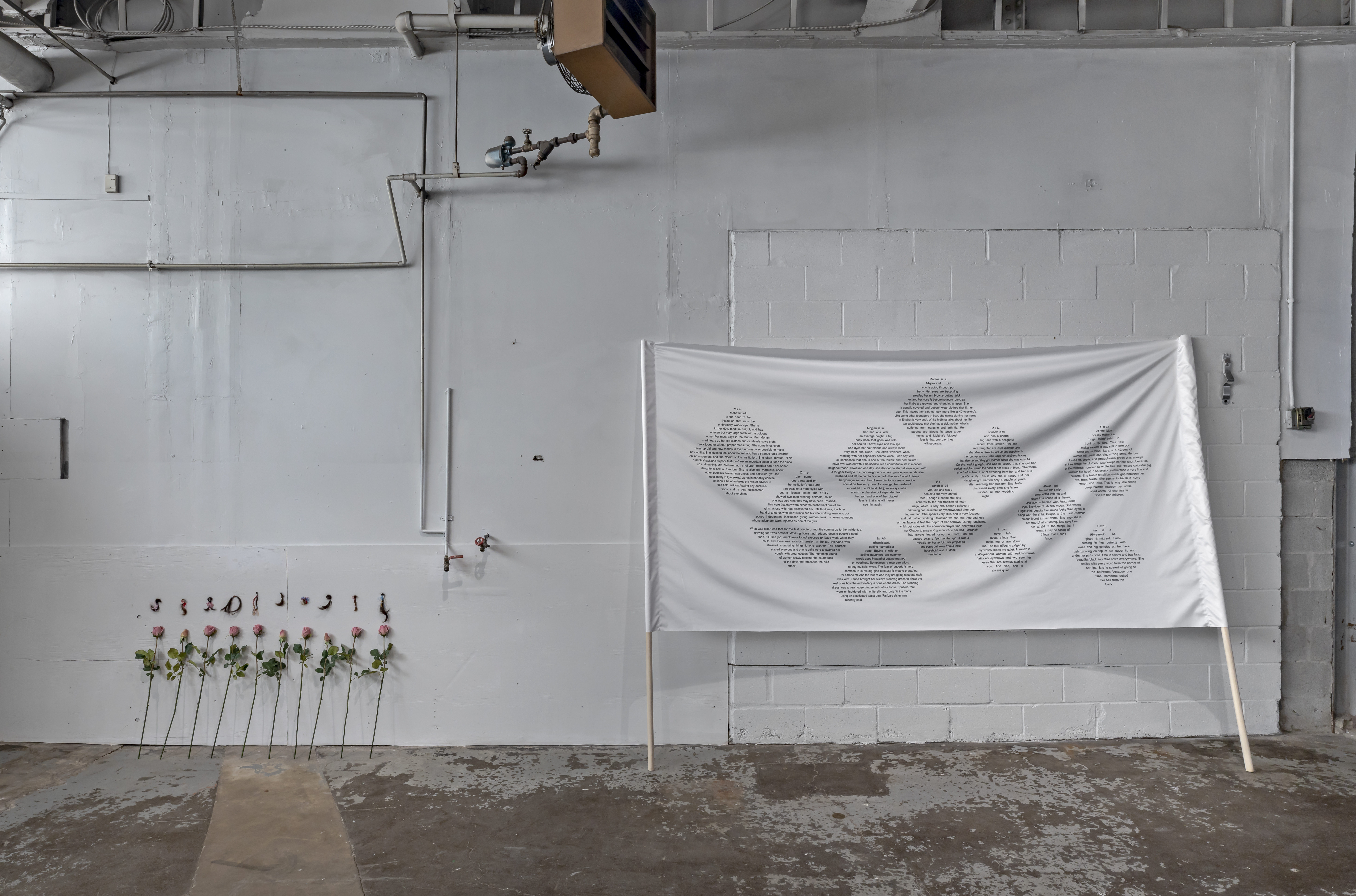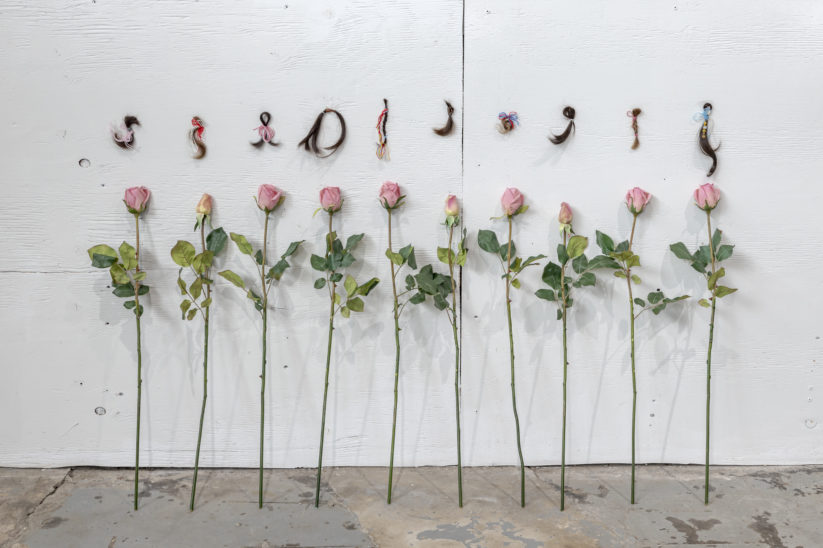September 21 – December 1, 2019
Lo’bat is an installation comprised of narrative text, roses, locks of hair, and a jellyfish-like robot that responds to the presence of viewers. Lo’bat is a Farsi word that loosely translates to “puppet,” taken from a poem by the eleventh-century Persian mathematician and poet Omar Khayyam.
The installation emerged from the artists’ unique process of inviting others to contribute freely to an artwork. Fabric was given to a women’s group in Tehran that works with Afghan migrants who learn embroidery to support themselves and their families. The women offered to share personal stories of anxiety and fear, embroidering representative images into the textile, while a Catalonian puppeteer and an Italian set designer worked in tandem to program a mechanical choreography that responds to the presence and movement of viewers.
With the participation of: Maryam Abasspour, Niyaz Azadikhah (with the Goharaneh Institution), Zahra Bagheri, Joan Baixas, John Cole, Francesco Fassone, Mehrdokht Jamali, Hoda Keshavarz, Mobina Khanzadeh, Roberto Luttino, Afsane Norouzi, Fardina Norouzi, Mahbube Ramezani, Fariba Tajik, Parastou Tajik, Sara Tousi, Farzaneh Zahrayi, and Azam Zoghi. With special thanks to Spazio Kor, Asti, Italy.
Originally commissioned by Han Nefkens Foundation (2017). Current iteration commissioned by the Toronto Biennial of Art (2019).
Bio
Ramin Haerizadeh (born in 1975, Tehran, Iran), Rokni Haerizadeh (born in 1975, Tehran, Iran) and Hesam Rahmanian (born in 1980, Knoxville, USA) formed a collaborative practice as early as 1999 in Tehran. However, it was in the United Arab Emirates where their practice flourished, and it is where the artists have resided in self-imposed exile since 2009. The artists work individually and collectively and often incorporate friends and people from different walks of life into their practice. The trio’s work is often referred to as a landscape, where the complex nature of processing is integrated into the nested system that forms the landscape of their shows.
Exhibition Site
259 Lake Shore Blvd East
The life of this nondescript building reveals the area’s economic history. Its first tenant in 1945, the Standard Chemical Company, produced methanol, formaldehyde, and charcoal. A railway line to the south tethered the site to the movement of goods. By 1954, the building was divided into a warehouse and a showroom, a configuration that remained intact over the course of various leaseholders, including oil and electrical supply companies and a series of car dealerships. (The advertising of its most recent tenant, Volvo, is still visible on the façade.) This building’s fate is indeterminate, as real estate development is increasingly filling the voids left by industrial decline.
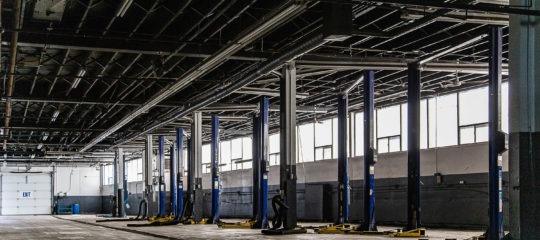
259 Lake Shore Blvd East
Toronto ON
M5A 3T7

